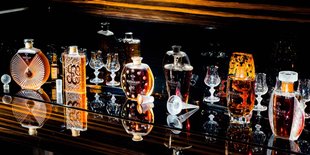Irish Whiskey vs Scotch (10 Differences, Best Bottles to Buy)
No matter which side of the Irish whiskey vs Scotch debate you’re on, both spirits are similar in their ingredients, aging casks, and investment potential.
But that’s pretty much where the similarities end.
Irish whiskey and Scotch differ quite a bit in price range, production volumes, distillation process, and much more.
In this article, we’ll look at the ten fundamental Irish whiskey vs Scotch differences and list the best investment-grade Irish whiskey and Scotch labels for you to buy. We’ll also answer some common FAQs about both these spirits.
Lastly, we’ll tell you the most convenient way for you to invest in exclusive whiskey casks.
Further reading
- Discover all about investing in whiskey in this Detailed Whiskey Investment Guide.
- But if you'd like to invest in wine, go through this Comprehensive Guide on Wine Investment.
Irish Whiskey vs Scotch: 10 Key Differences
Here’s a quick summary:
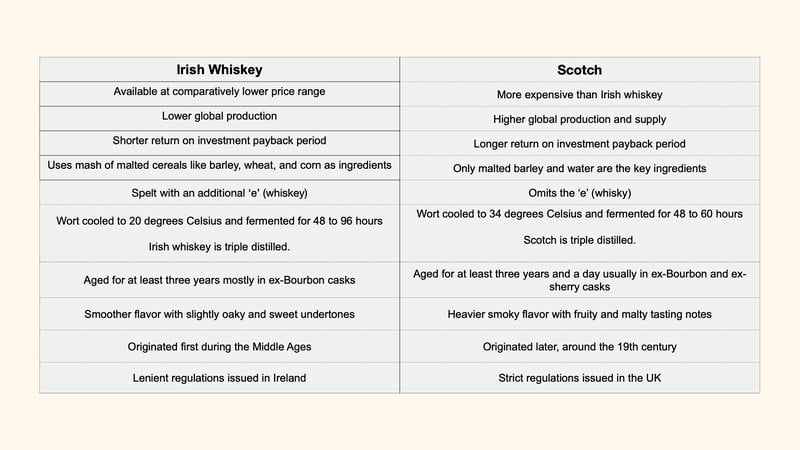
Here are the ten critical differences between Irish whiskey and Scotch in more detail:
- Price Range
- Production Volumes (Supply)
- Return on Investment Payback Period
- Ingredients
- Spelling
- Fermentation and Distillation
- Aging
- Tasting Notes and Aromas
- Origin and Evolution
- Regulations
1. Price Range

Historically, Scotch has been the more expensive spirit.
While high-end Irish whiskey is available for a few thousand dollars, premium Scotch labels can cost you hundreds of thousands of dollars.
Scottish whisky has also been a leading contender at several auction events.
For instance:
- The Macallan Lalique 57-Year-Old Single Malt Scotch Whisky fetched an astounding final bid of $172,218 at a 2021 Christie’s auction.
- The Glenfiddich-64-Year-Old-1937 Scotch was sold for $77,500 at a Bonham’s auction event in 2016.
But why is Scotch so expensive?
Scottish whiskey is made exclusively from barley – a costlier ingredient than corn or wheat (used in other whiskeys) – and usually undergoes processing in expensive pot stills.
2. Production Volumes (Supply)
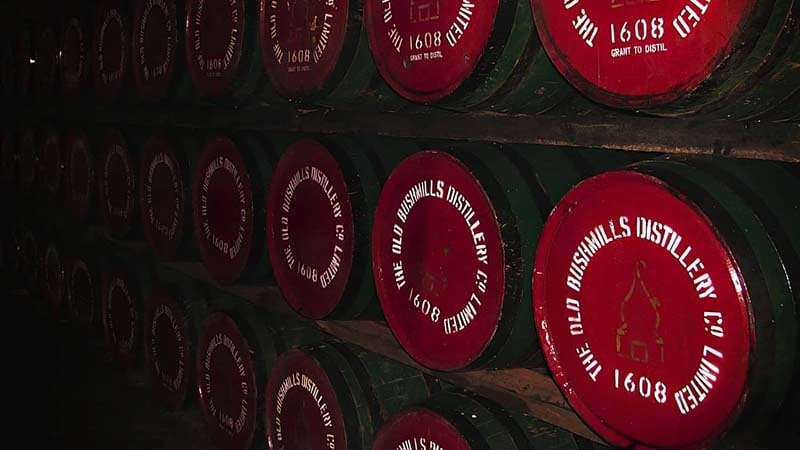
Scotch production outpaces Irish whisky by a considerable margin – its global production was worth a whopping $5.2 billion in 2021 (compared to the $4.3 billion of Irish whiskey). Scotch accounted for 75% of Scotland’s food and drink exports.
Scottish whisky also has more established distilleries compared to its Irish counterpart.
Though Irish whiskey dominated the whiskey market in the mid-1900s, it suffered a setback, with only a few operational distilleries left by the end of the century.
However, in the past decade, Irish whiskey witnessed a surge in production (about 300%.) Its annual production was to the tune of 14 million cases in 2021. The Irish Whiskey Association predicts this number will be 24 million by 2030.
But even with today’s limited supply, Irish whiskey sales have consistently increased annually.
3. Return on Investment Payback Period

Both Scotch and Irish whiskey deliver incredible investment returns. But the return on investment payback period for Irish whiskey is shorter than Scotch.
Since Irish whiskey can be bottled and drunk after three years, investors can also realize their profits after a shorter period.
In contrast, most quality Scotch labels must be at least ten years old.
So, you’ll have to wait longer to turn your freshly bottled Scotch whiskey to return a profit.
While whiskey bottles are fairly lucrative assets, you’ll have a better chance of earning returns through whiskey casks. The secondary market is still quite niche, but supply-and-demand disparity shows good potential for future growth.
If you’re keen to get started with whiskey cask investment, you can reserve your exclusive casks with Vinovest.
4. Ingredients
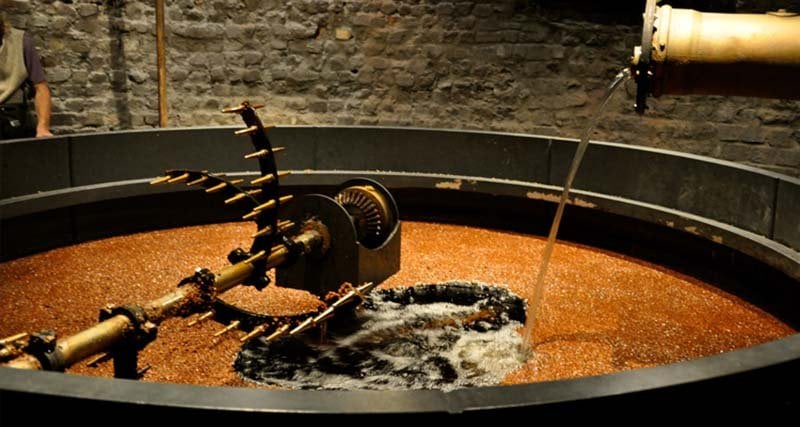
The main ingredient of Irish whisky is a mix of malted cereals like barley, wheat, and corn.
In contrast, Scottish whiskey uses only malted barley and water in its whisky.
5. Spelling
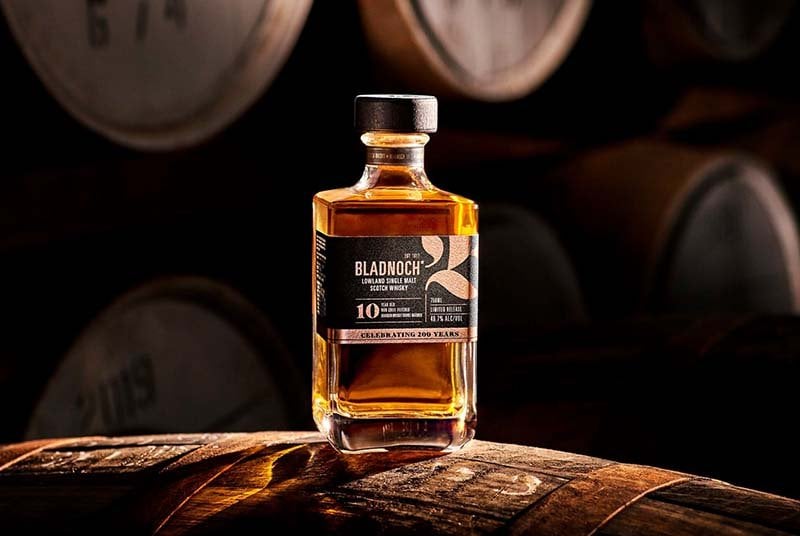
The quirkiest difference between Irish whiskey and Scotch is the variation in their spelling. While the Irish label is spelled with an additional ‘e’ (whiskey), Scotch whisky omits it.
Why?
It’s just a difference in translation that stuck!
As whiskey was brought to the United States by Irish immigrants, American “whiskey” kept the ‘e.’ The rest of the English-speaking world took Scotland’s lead and left out the ‘e.’
6. Fermentation and Distillation
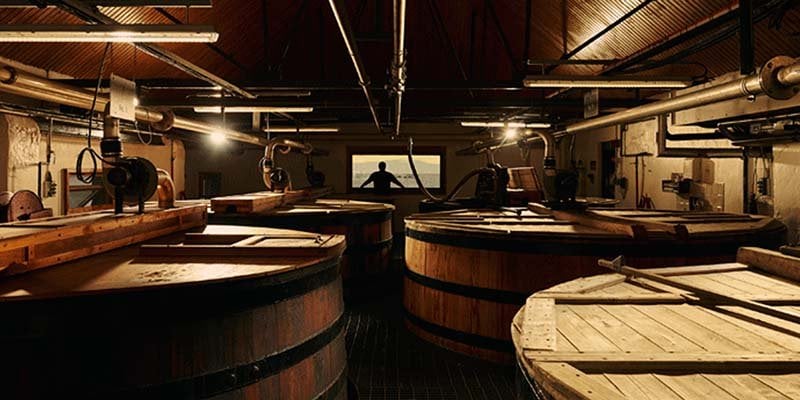
During fermentation, single malt Scotch exclusively uses malted barley, while Irish whiskey is made from a mash of malted and unmalted barley. Distillers add cultured yeast after cooling the Irish whiskey wort to 20 degrees Celsius and cooling Scotch to 34 degrees Celsius.
Fermentation lasts for 48 to 96 hours for Irish whiskey and 48 to 60 hours for Scotch.
Note: Wort refers to the liquid mix of cereals and warm water extracted after the mashing process.
After fermentation, Scotch is usually double-distilled. On the other hand, Irish distillers refine their whiskeys through triple distillation. This variation in the distillation process (double and triple distillation) accounts for the taste difference you notice between the two styles.
7. Aging

The difference in the maturation between Irish whiskey and Scotch is subtle:
- Distillers age Irish whiskey for at least three years in oak barrels. They often use ex-Bourbon casks to impart the signature sweet undertone to the spirit. Charring the wood produces a woody, smoky taste.
- Scotch is also matured for at least three years and a day, though you’ll find that most reputable labels have been aged much longer. American white oak (ex-Bourbon) and European oak (ex-sherry) are the two types of casks used for Scotch maturation.
However, aged whiskey is a coveted asset irrespective of style, and investing in whiskey casks remains an excellent and reliable alternative investment.
8. Tasting Notes and Aromas
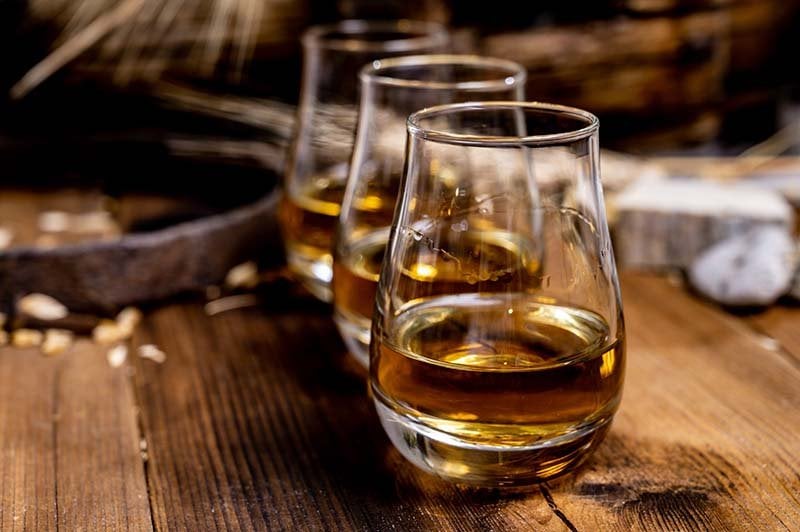
The distinct flavors of Irish whiskey and Scotch are because of the difference in their ingredients and aging casks
Since Scotch whiskey uses malted barley as its primary ingredient, you’ll get a fuller heavier taste from it compared to Irish whiskey.
- Flavors: Malty flavor with fruit and vanilla tasting notes
- Aromas: Distinct hint of peat and smoke
Irish whiskey is prepared from a mash of malted and unmalted barley, giving it a smoother flavor with subtle vanilla hints.
- Flavors: Light fruity flavor with cereal grain and caramel tasting notes
- Aromas: Woody aromas with floral and oaky hints
The easy taste also makes Irish whiskey preferable in blends over Scotch.
9. Origin and Evolution
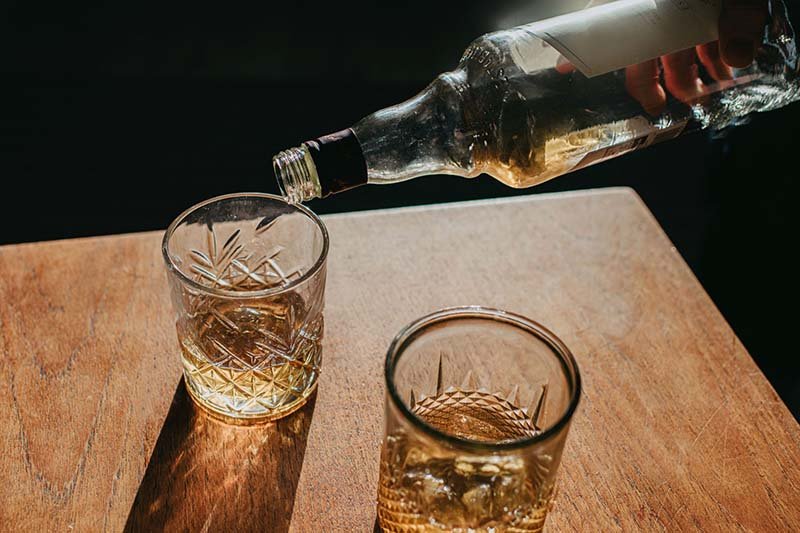
Of the two spirits, Irish whiskey originated first. Its initial samples were distilled by monks as a pastime and then gradually evolved into a booming industry.
Early Irish whiskey used unmalted barley and was flavored with fruits and spices. It was also mostly unaged, except when stored for some time during transportation.
On the other hand, Scotch production began in the 1800s and soon surpassed Irish whiskey in popularity. Though Scotch is also pot distilled, column stills became common in the 19th century.
10. Regulations
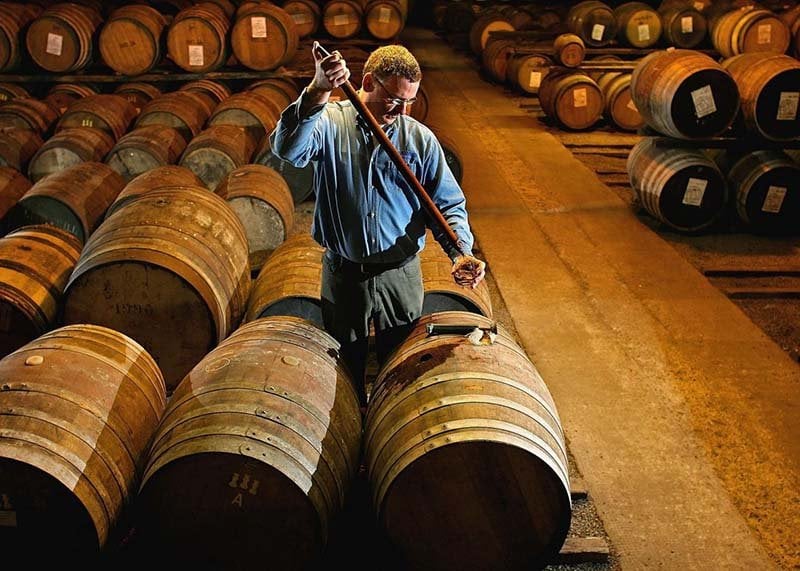
The Scotch whisky regulations were codified in the UK and are much stricter than those for Irish whiskey.
The major Scotch whisky regulations are:
- Scotch must be produced in Scotland.
- The spirit must be aged for at least three years.
- Scotch whisky must be matured only in an oak cask with a maximum capacity of 700 liters.
- No additives can be used in Scotch whisky production except water, plain caramel coloring, or both.
- The minimum ABV for Scotch is 40%.
The regulations concerning Irish whiskey are:
- The whiskey must be produced and matured in a distillery in Ireland.
- It must be matured for at least three years in wooden (oak) casks by Irish distillers.
- The chief Irish whiskey ingredients are cereals (wheat, barley, rye, or corn). Only water (60% or less) and caramel coloring are the other permitted additives.
- The maximum alcohol concentration can be 94.8% ABV (Irish Whiskey Act.)
Best Investment-Worthy Irish Whiskey and Scotch Labels
Here are some of the best investment-grade Irish whiskeys and Scotch labels you can add to your collection:
Irish Whiskey

Some collectible Irish whiskey labels are:
- The Devil's Keep Single Malt Irish Whiskey ($17,252): The Devil’s Keep was a limited release of 333 bottles distilled in 1991. The whiskey exudes Christmas cake and maple syrup scents with rich honey, dark chocolate, and cherry notes.
While it’s value declined in early 2022, it recovered in later months, appreciating by over 1,000%.
- 2009 Midleton Very Rare Vintage Blended Irish Whiskey ($6,250): This blended Irish whiskey presents a crisp nose of green apples and mint with a heady citrus fruit and spice palate.
Its price increased by over 200%, from $2,995 in 2021 to $9,029 in 2022.
- Redbreast-25-Year-Old Single Pot Still Irish Whiskey ($1,582): This single pot from the Redbreast Irish distillery opens with ripe red fruit, oak, and spice aromas offset by cherry and chocolate notes.
Between 2021 and 2022, the whiskey showed a significant price rise of over 100% from $1,192 to $2,445.
- 1991 The Teeling Whiskey Co. Vintage Reserve Single Cask 24-Year-Old Single Malt Irish Whiskey ($762): This vintage label was the winner of the 2019 ‘Best Single Malt’ title at the World Whiskey award. It presents grape, apricot, and milk chocolate aromas in a mesmerizing honey and fruit palate.
The label showed a significant appreciation of over 96% from 2021 ($414) to 2022 ($813.)
- Glendalough 25-Year-Old Single Malt Irish Whiskey ($512): Here’s a single malt from theGlendalough Irish distillery that boasts a stunning bouquet of apple, blackcurrant, and spice aromas. Its palate is equally compelling with delicious sour plum, prune, and treacle notes.
It has delivered an annual return of over 13% between 2020 ($479) and 2021 ($543.)
Scotch Whisky
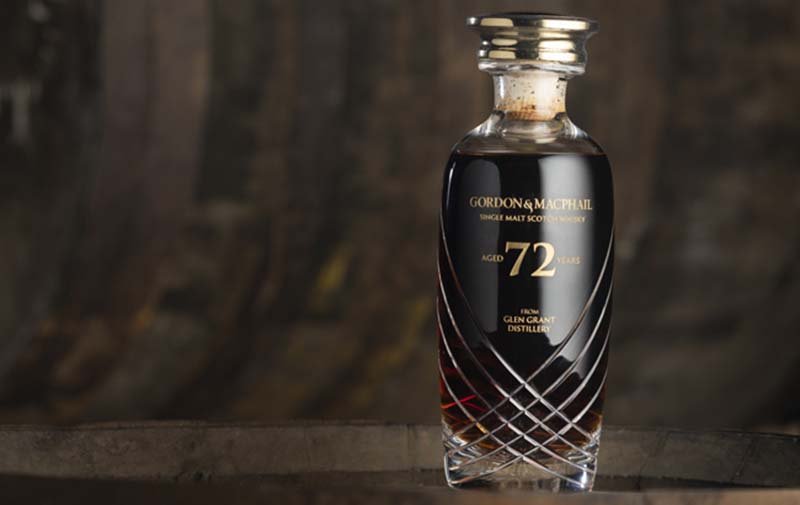
Here are some notable investment-worthy Scotch whiskies:
- The Macallan 50-Year-Old Single Malt Scotch Whisky ($119,191): Here’s a luxurious label coveted for its wood spice and dried fruit fragrances offset by spectacular lemon, pineapple, and orange flavors.
Between 2021 and 2022, Macallan’s prized Scotch appreciated by about 26% from $106,715 and $134,396.
- 1948 Gordon & MacPhail Glen Grant 72-Year-Old Single Malt Scotch Whisky ($119,006): This beautiful Speyside Scotch gives off rich Christmas cake and sherry aromas balanced by delicious espresso, dark chocolate, and spice notes.
The 1948 vintage increased by 71% from $68,466 (2021) to $117,448 (2022.)
- 1940 Gordon & MacPhail Generations Glenlivet 80-Year-Old Single Malt Scotch Whisky ($111,694): This classic Gordon & MacPhail whisky has potent almond oil, gorse flower, and sandalwood scents complemented by lingering date, plum, and fig notes.
The bottle’s value rose by over 32% from $87,704 in 2021 to $115,803 in 2022.
- Bowmore 'Black Bowmore' The Trilogy 42-Year-Old Sherry Cask Single Malt Scotch Whisky ($37,601): The 42-year-old Bowmore bottle presents fabulous aromas of prunes, dried apricots, and pears. The spirit has a long finish with caramel, fudge, and vanilla flavors.
The price of this Scotch whisky increased by more than 16% between 2020 ($35,270) and 2021 ($41,062.)
- Highland Park 50-Year-Old Single Malt Scotch Whisky ($28,446): One of the top whiskies from Orkney, this beautiful label offers spectacular sultana, fig, and tangy citrus scents in a vibrant palate of toffee, orange, and dried fruit.
The Highland Park Scotch showed a significant value appreciation of 16%, rising from $26,714 in 2020 to $31,017 in 2021.
Other FAQs About Irish Whiskey and Scotch
Let’s look at some other questions you may have about Irish whiskey and Scotch.
1. What Are the Different Types of Irish Whiskey and Scotch?
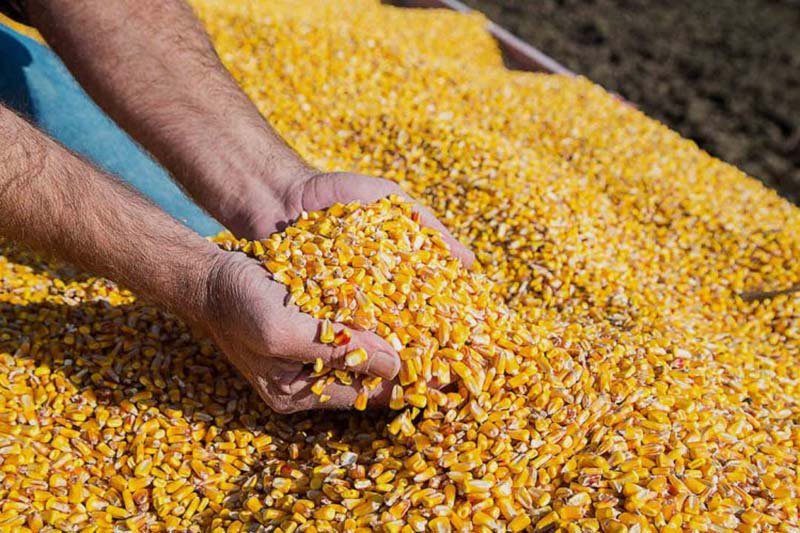
The different types of Irish whiskey are:
- Irish grain whiskey: Irish grain whiskey is made using malted barley combined with unmalted whole grains like corn or wheat and distilled in column stills.
- Irish single malt whiskey: This single malt whisky is produced in a pot still by a single distillery and made entirely with malted barley.
- Irish pot still whiskey: Unique to Ireland, this style is distilled in a pot still and made with a blend of malted and unmalted whiskey.
- Blended Irish whiskey: Blended Irish whiskey is made using a mix of single malt whiskeys from the same or multiple distilleries.
The different styles of Scotch whiskies are:
- Single malt Scotch whisky: This single malt whisky variety has the highest sales volume and is prepared exclusively from malted barley distilled in copper pot stills.
- Single grain Scotch whisky: Scottish single grain whisky is made from wheat or corndistilled in a reflux column for balanced flavors.
- Blended malt Scotch whisky: It’s the style of blended Scotch whisky crafted by blending different single malt Scottish whiskies.
- Blended grain Scotch whisky: This blended whiskey is made by combining Scottish single grain whisky labels from two or more distilleries.
- Blended Scotch whisky: Blended Scotch whisky is made by mixing any of the above categories of whiskies.
2. What Are the Prominent Scotch Whisky Regions?

The leading Scotch whisky regions are:
- The Highlands: The Highlands is Scotland’s largest whiskey region extending from the Glasgow belt to the Pentland Firth. It accounts for 25% of the country’s malt whiskey production and includes popular brands like Glenmorangie, Oban, and Dalmore.
- The Lowlands: This region has the most distilleries in Scotland and is known for its blended whiskey production. While Lowland’s labels were all triple distilled in the past, only Auchentoshan follows the technique today.
It also houses one of the country’s largest malt distilleries, Alisa Bay (producing 12 million liters every year.)
- Speyside: Speyside is a sub-region of the Highlands around the River Spey. It has some of the world’s most prominent distilleries, including Macallan and Dalwhinnie. Its labels present a fruity and spicy palate with oak undertones.
- Islay: Islay,also called ‘The Queen of the Hebrides,’ is one of Scotland’s southernmost whiskey regions. Its whiskies are malted over burning peat, giving them a distinct smoky style. Bowmore, Ardbeg, and Laphroaig are some of Islay's best-known labels.
- Campbeltown: This is the smallest Scotch region in terms of production volume and distillery count. It houses brands like Springbank and Glen Scotia and presents a peaty whisky style.
3. Is Irish Whiskey More Like Bourbon or Scotch?

Irish whiskey tastes more like Bourbon (an American whiskey) than Scotch since it’s matured in old Bourbon casks for at least three years. This prolonged aging in ex-Bourbon barrels adds a subtle sweet flavor to Irish whiskey, reminiscent of the American spirit.
4. How Are Irish Whiskey and Scotch Similar?

Though Irish whiskey and Scotch differ significantly, they also share a few commonalities:
- Ingredients: Both whiskeys are produced from malted cereals. Single malt Irish whiskey, in particular, is made from malted barley – just like Scotch.
- Aging casks: Irish whiskey and Scotch are usually aged in an old oak cask (ex-Bourbon or sherry). They develop a hint of sweetness when matured in ex-Bourbon casks and a fruity palate when aged in sherry barrels.
- Investment potential: Both Irish and Scotch whiskies boast remarkable investment potential. While the value of your returns may vary depending on the spirits’ market performance, they both are lucrative alternative assets.
5. What Are the Other Whiskey Types Besides Scotch and Irish Whiskey?

The whiskey types other than Irish whiskey and Scotch are:
- Bourbon whiskey: This distilled American whiskey is usually made from corn (at least 51%) and matured in charred new oak casks. It can be labeled Bourbon whiskey only if it’s produced in the United States.
Bourbon is a much sweeter spirit compared to Irish whiskey and Scotch, with delectable caramel, vanilla, and spice flavors.
- Japanese whisky: The delicately sweet Japanese whiskey is produced from mashed malted barley, distilled twice in pot stills, and matured in a Japanese Mizunara oak barrel. These barrels impart fragrant citrus and spice notes to this Scotch-like spirit.
- Rye whiskey: Rye whiskey is a North American whiskey made with fermented rye (wheat-like cereal), corn, and barley. A preferred ingredient for whiskey cocktails, it’s matured for at least two years in charred barrels, which lends it a spicier flavor.
- Tennessee whiskey: Tennessee whiskey is produced in the US state of Tennessee. It’s made with the same percentage of corn as Bourbon but has to be aged in a new charred oak barrel.
After maturation, the whiskey undergoes charcoal filtration that balances its flavor.
Invest in Exclusive Irish Whiskey and Scotch Casks with Vinovest
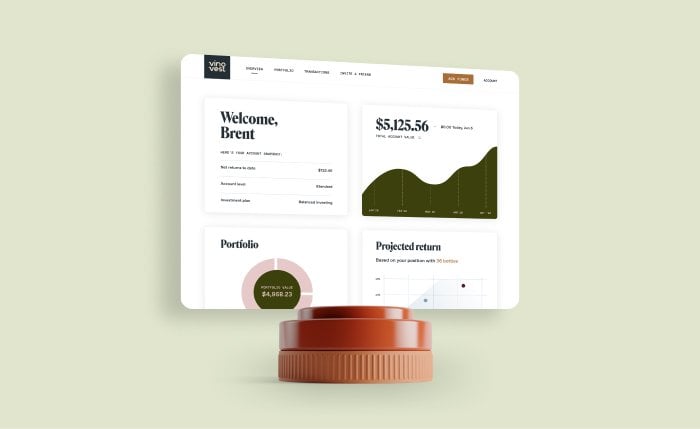
Irish whiskey and Scotch are both investment-grade spirits with noteworthy differences and a few similarities. They’re two of the world’s favorite whiskeys with distinctive flavor profiles yet consistent demand.
If you’re a discerning collector hoping to invest in luxurious whiskey brands, sign up with Vinovest and reserve your exclusive whiskey cask today!
